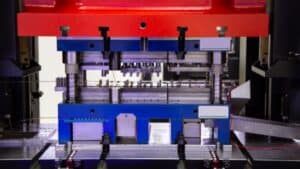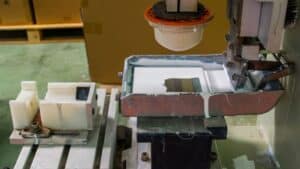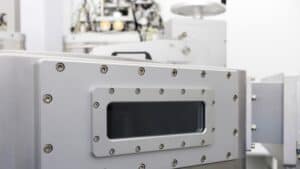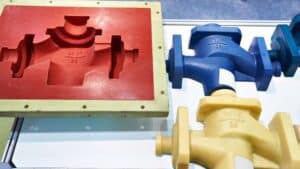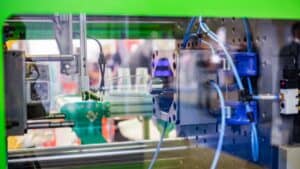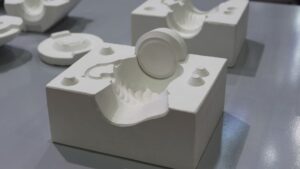The modern plastic products manufacturing industry has adopted many manufacturing methods; vacuum forming and injection molding are the most commonly used ones among them. Both techniques rely on molds and require high temperatures and are generally very economical. However, while they share many characteristics, the methods differ significantly in their execution.
You might wonder which option is right for your project. Understanding the differences between injection molding and vacuum forming will help you make a smart choice for your business. Keep reading to learn how each method works and which one is the best fit for your needs!
Overview of Injection Molding
Injection molding is a common manufacturing method used to make plastic parts. This process is known for high precision, fast production, and the ability to use different types of plastics. Many everyday products use this method because it can produce strong, detailed items quickly.
Injection Molding Process Steps
Injection molding uses several key steps to turn raw plastic pellets into shaped parts.
- Plastic pellets of a thermoplastic material, like polyethylene or ABS, are loaded into a hopper.
- The pellets move through a barrel while heaters are melting them into the fluid form.
- The plastic material is then injected through a nozzle into a metal mold cavity, usually made from steel or aluminum.
- Inside the mold, the plastic cools and hardens into the shape of the mold cavity.
- The mold opens, and the finished part is ejected.
This injection molding machine is often fully automated. Cycle times may vary, but most parts cool and are removed in under a minute.
Key Materials for Injection Molding
Many types of materials are used in plastic injection molding. Thermoplastics are most common because they melt and re-harden easily, and they can be further divided into different categories depending on their general characteristics.
Overview of Vacuum Forming
Vacuum forming is a variation of thermoforming that uses heat and air pressure to form plastic sheets over molds. You can use it to make parts with smooth surfaces and curved shapes from a range of thermoplastic materials.
Vacuum Forming Process Steps
In vacuum forming, you start with a thin plastic sheet. You heat this sheet until it becomes soft and flexible. Once it’s at the right temperature, you lay the sheet over a mold—either a male mold (the shape sticks out) or a female mold (the shape is recessed).
A vacuum pump then removes the air between the mold and the sheet. This forces the plastic to tightly hug the mold’s surface, picking up fine details. After the plastic cools and hardens, you trim away the extra material.
Steps in order:
- Place the thermoplastic sheet in the frame.
- Heat the sheet evenly.
- Lower the sheet over the mold.
- Apply a vacuum to pull the sheet to the mold’s shape.
- Cool and release the formed part.
Vacuum forming is good for making trays, packaging, signs, and light covers when you need detail but not sharp corners.
Key Materials for Vacuum Forming
Several thermoplastics are commonly used in vacuum forming because they soften when heated and harden again as they cool.
Manufacturing Applications
Manufacturing processes are chosen based on the product’s needs, quantity, and budget. They each work best for different kinds of products and production scales.
Injection molding is commonly used to produce complex, strong, and parts with high tolerance in huge amounts. For example, gears, medical devices, or phone cases, door handles, power tool housings, keyboard keys, etc.
Vacuum forming is better suited for making large, simple parts—like packaging trays, car dashboards, or bathtub liners, small ship hull, seating covers, and so on—at a lower cost.
Advantages of Injection Molding
Injection molding allows the production of large numbers of identical plastic parts quickly and accurately. It is especially useful when you need detailed features or must keep part quality the same from one run to the next.
High-Volume Production
If you need to make a large number of parts, injection molding is one of the most efficient ways to do it. The manufacturing process uses automated machines that can run long shifts, producing parts at a fast rate. Once the mold is ready, a production run can be finished within seconds or minutes.
You can also expect lower costs per part as you increase production volume. This is because material waste is kept low, molds are durable, and labor costs are reduced by automation. Common uses include packaging, automotive components, and medical products.
Key benefits for mass production:
- Fast cycle times
- Consistent quality
- Low labor needs after setup
- Reduced waste
Intricate Details and Consistency
Injection molding is a top choice if your parts must have small features, complex shapes, or precise measurements. The molds used are designed with high accuracy, making it possible to add letters, textures, or very thin walls.
Each part is nearly identical to the last due to the controlled, repeatable process. This keeps defects low and means you can rely on the dimensions and performance of every product you make.
Important advantages include:
- design flexibility
- High accuracy and repeatability
- Smooth, detailed surfaces
- Consistent results across large batches
Advantages of Vacuum Forming
Vacuum forming is a popular method when you need faster production and lower costs, especially for smaller batches or prototypes. It offers key benefits for businesses that want to save time and money.
Cost-Effectiveness
Vacuum forming is more cost-effective than injection molding, especially for low-volume production and prototyping. The molds used for vacuum forming are usually made from materials like aluminum, wood, or plastic, which require lower initial costs than the steel molds required for injection molding. This results in significantly reduced upfront tooling costs.
Since mold costs are lower, you can make design changes without spending a lot of money. This is helpful when you need to adjust prototypes or test different looks. You also spend less on machine equipment and labor, saving money even further.
For short runs or custom projects, vacuum forming keeps your budget manageable. You avoid high investments when making only a few hundred or a few thousand parts. The trimmed parts also need less finishing work—saving time and cost in assembly.
Faster Lead Times
Vacuum forming enables faster lead times compared to injection molding. A simple vacuum form mold can be made in days rather than the weeks or months needed for steel injection molds. This makes rapid prototyping and changes possible without long waits.
You can move from design to finished product much faster. If you need to test an idea or get a prototype part quickly, vacuum forming helps you cut your time-to-market. Low-volume production schedules are easier to meet, and you can respond to market demands or customer feedback without heavy delays.
Faster tool making and production cycles mean your products reach the market sooner. For industries where speed and flexibility matter, this is a major advantage.
Summary
In conclusion, when selecting a manufacturing process, the choice depends on your project’s specific demands. Injection molding excels at mass-producing highly intricate and durable components. Conversely, vacuum forming is superior for creating larger, simpler shapes with lower initial mold costs and faster setup times.
Now that you have learned the ins and outs about the key differences, benefits, and applications of both part making techniques, why not browse our pages for related services and products? Visit our website for your quote today!
Frequently Asked Questions
How does the choice of materials differ when using injection molding compared to vacuum forming?
Injection molding uses materials like ABS, polypropylene, and polycarbonate. These plastics must melt and flow into a closed mold at high pressures. The choices are more limited by the need for these materials to stay stable under heat and pressure.
Vacuum forming works well with plastics such as polystyrene, PETG, and acrylic. These materials are heated until soft and then shaped by a vacuum over a mold. Vacuum forming usually needs sheets of plastic that can form easily without cracking.
What is the typical turnaround time for producing parts with injection molding versus vacuum forming?
Injection molding takes longer to set up because of the time needed to make the mold. Production of each part is fast after setup, but making new molds can take several weeks.
Vacuum forming usually has a shorter setup time. This means you can get small batches or first samples within a few days. It is often used for simple parts when speed matters more than precision.
How do environmental factors and sustainability compare between injection molding and vacuum forming?
Injection molding can create more waste, especially from excess material and rejected parts. Some plastics are harder to recycle. The process also uses more energy because of the high pressures and temperatures needed. But it is possible to produce recycled injection molding products.
Vacuum forming usually produces less waste since it uses only the needed plastic sheet and scrap can be recycled. It uses lower temperatures and less energy. Some vacuum-formed plastics are easier to reuse or recycle, which can reduce your environmental impact.

